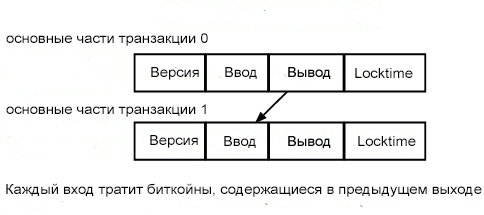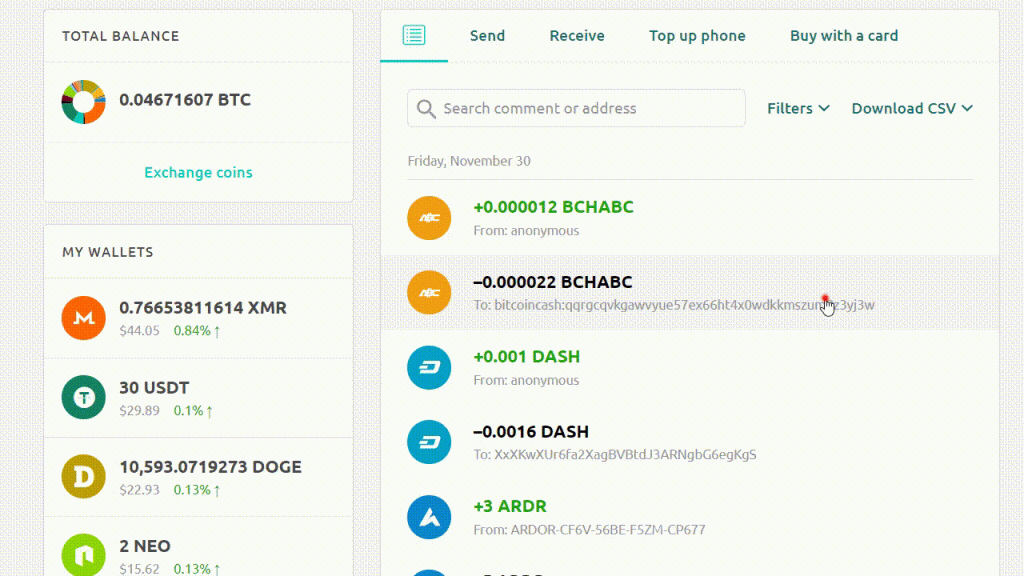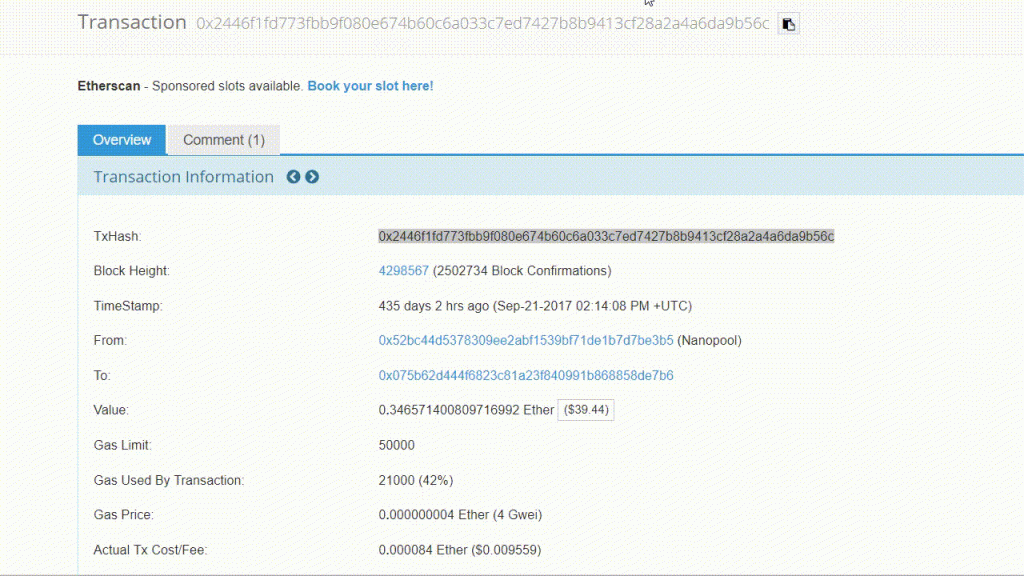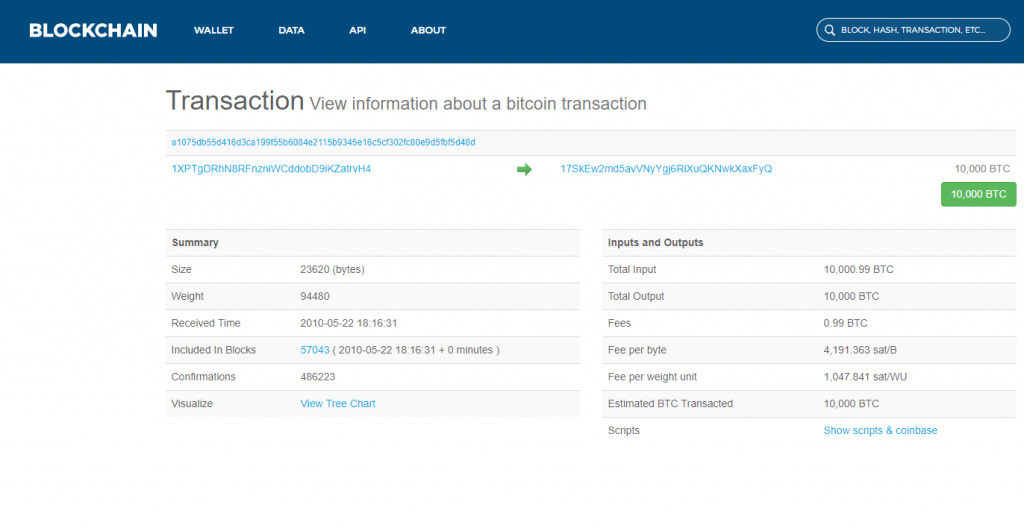“Acquiring money requires valor, keeping money requires discretion, spending money requires art”
Berthold Auerbach
Today, the world of cryptocurrency has its own specific terminology, which is often not entirely clear to beginners. If you are one of them, then we will help you understand one important thing that every crypto trader should know about. And this is the TXID of digital currency transactions. Today we will explain what these four letters mean, what the TXID function is, how to find it, and how to use it..
What is TXID and why is it needed
To understand the essence, let’s first understand what a transaction is. Money is sent from one account to another, that’s all. If we talk about digital currencies, then coins are transferred from one cryptocurrency wallet to another. However, how are cryptocurrency transactions technically carried out? What Really Happens Behind the Blockchain Scene When Cryptocurrency Is Transferred?
Well, a transaction is actually information about the transfer of assets. This information is recorded in blocks of the blockchain of a specific digital currency. Each block contains a header and a list of transactions. The header includes the hashes of the transactions, the hash of the block itself, and the hash of the previous block. To become a valid part of the blockchain and be recorded in a block, every transaction must be confirmed by a miner.
Since the validity and correctness of each record is ensured by the decentralized blockchain network, it becomes impossible to manipulate information in the distributed database..
The time taken to confirm transactions is one of the problems with Bitcoin (and some other virtual currencies). Initially, it was planned that the transfers of cryptocurrency would be instant, but it soon became clear that, given the manifold increase in the number of users, the confirmation of transactions could take more and more time..
Larger transactions, as well as transactions with higher user-set fees, are confirmed faster. Miners confirm transactions when they create new blocks on the blockchain, performing calculations to find the hash.
Transactions on networks like Bitcoin are carried out using the UTXO (unspent transaction output) model. With this model, nodes on the network keep track of all available transaction output data, or UTXO (unspent transaction – output) for short, that can be used to generate a transaction. TXID acts here as the identifier of each unspent transaction or transaction hash. In other words, TXID is a unique piece of data that is used to identify a transaction..

As shown in the picture above, each transaction has at least one input and one output, with each input spending the bitcoins contained in the previous output. The output, now UTXO, is in the UTXO set until spent on a later input. Thus, when the user’s wallet indicates a consumable balance of 5 BTC, this can be interpreted as meaning that the user has 5 UTXOs with a denomination of 1 BTC or 1 UTXO with a denomination of 2 BTC and 1 UTXO with a denomination of 3 BTC. In fact, the denomination and the number of UTXOs can be any, in one thing we can be sure that their total nominal amount will be equal to 5 Bitcoins. It is important to remember that UTXO is an indivisible quantity. Therefore, if, for example, you want to buy a new iPhone, the latest model, for 0.5 BTC, and you only have two UTXOs in denominations of 2 and 3 BTC, then the blockchain network will take your free UTXO of the lowest denomination – in the amount of 2 BTC and create in exchange 2 new UTXOs, one of which will be 1.5 BTC minus transaction fees and the second UTXO – 0.5 BTC, which will become the property of the phone seller.
Therefore, our transaction will contain full information that you transferred a specific UTXO with a face value of 2 BTC of the blockchain network, of which 0.5 BTC to a specific seller and received another specific UTXO with a face value of 1.5 BTC minus a specific commission in return..
All this data is encrypted in the transaction.
Further, buying something else, you are already using a new UTXO with a nominal value of 1.5 BTC and the whole history with the record of the amount and counterparties of the operation is repeated. The next transaction is formed. And so on indefinitely, until the money on the balance runs out &# 128578;
The collected transactions are translated in a serialized, byte format called the raw transaction format. In computer science, serialization is the process of translating the internal representation of a data structure into a format that can be transmitted one byte at a time. This raw transaction format is then hashed twice using a cryptographic hashing algorithm, which in the case of Bitcoin is SHA-256 encoding, to create the TXID of the transaction.
Therefore, TXID is a “passport” of a transaction, a unique number that can be used to identify the current status of a particular transaction, as well as to determine whether it was actually recorded on the blockchain or not. The TXID (Transaction ID) or Transaction Hash is assigned to every transfer of cryptocurrency. Since cryptocurrency exists as recorded information, it is very important to track the status of such a record..
TXID is assigned by the cryptocurrency transaction immediately after joining the network and is its unique token. It is randomly generated and looks like a sequence of letters and numbers. Total TXID size is 64 characters.
All these transactions are summed together into one block, which forms the chains and the entire blockchain. Thus, we get a complete and transparent and at the same time, hacking-resistant report of all users of the system with detailed data to whom and how much money we transferred and how much we have left in the balance.
How to use TXID
The transaction receives its TXID automatically, and users usually don’t even care about it, unless there are any problems – their transaction is delayed, the assets were not received, etc. In such cases, it becomes necessary to check the status of the transaction to find out if it is recorded in the blockchain and is it confirmed or not.
TXID is not guaranteed until the transaction is confirmed by the network. However, tracking payments using TXID can be affected by the pliability of the transactions. This happens when the TXID of a transaction changes before it can be confirmed in a block. This is problematic as it creates opportunities for an attack on poorly coded wallet software that assumes that unverified TXIDs are immutable. In the case of Bitcoin, the implementation of Segregated Witness or SegWit was designed to address the issue of transaction flexibility..
With the introduction of SegWit, transactions on the Bitcoin network now have two identifiers, TXID and WTXID. TXID is a traditional transaction identifier that is a double SHA-256 hash of a serialized transaction without witness data. Whereas the new WTXID transaction is a double SHA-256 hash of the new serialization format for a witness data transaction. Thus, since SegWit transactions do not contain evidence in every input, there is no part of the transaction that can be changed by a third party.
You can use special services to track the status of the transaction. If you are interested in bitcoin transactions, there is a blockchain.com service that can help you with the BTC explorer. To verify an Ethereum transaction, you can use Etherscan. In addition, there are also multi-blockchain services where you can find detailed information on a range of cryptocurrency transfers and explore different blockchains. For example, SoChain can provide you with information on transfers of Bitcoin, Ethereum, Dash, Dogecoin, Zcash, and Litecoin. Users just need to enter the hash of the required transaction in the appropriate field and get the result.
How to find TXID
The TXID can be displayed directly in the cryptocurrency wallet when a specific transaction is performed by the user. Alternatively, you can find TXID using apps. Take the Freewallet app as an example..
Click on Transaction> Finding a hash in a list> Check the transaction on the blockchain.

In other services, get transaction details and look for something like transaction id, TXID, transaction hash, etc..
Hash example:
6146ccf6a66d994f7c363db875e31ca35581450a4bf6d3be6cc9ac79233a69d0
You can have a link from a platform like etherscan.io, for example:

If you have one, you need all the characters after “tx /”. For example, in the link above the hash:
0x2446f1fd773fbb9f080e674b60c6a033c7ed7427b8b9413cf28a2a4a6da9b56c

In this screenshot, you can see all the information about the transfer of 10 thousand BTC, carried out in May 2010 by one of the first Bitcoin developers Laszlo Hanitz to deliver two pizzas. At that time, it was very important for the developers and community of the first cryptocurrency to show that Bitcoin can indeed be used as a means of payment..
Conclusion
Thus, TXID is an important and useful element of every cryptocurrency transaction. This is a unique identification number for each transfer, which can help users track transactions on the public blockchain and get all the information they need about them. Existing services provide easy access to information stored in the blockchain of a particular digital currency and allow users to quickly read blocks and find the data they need.


